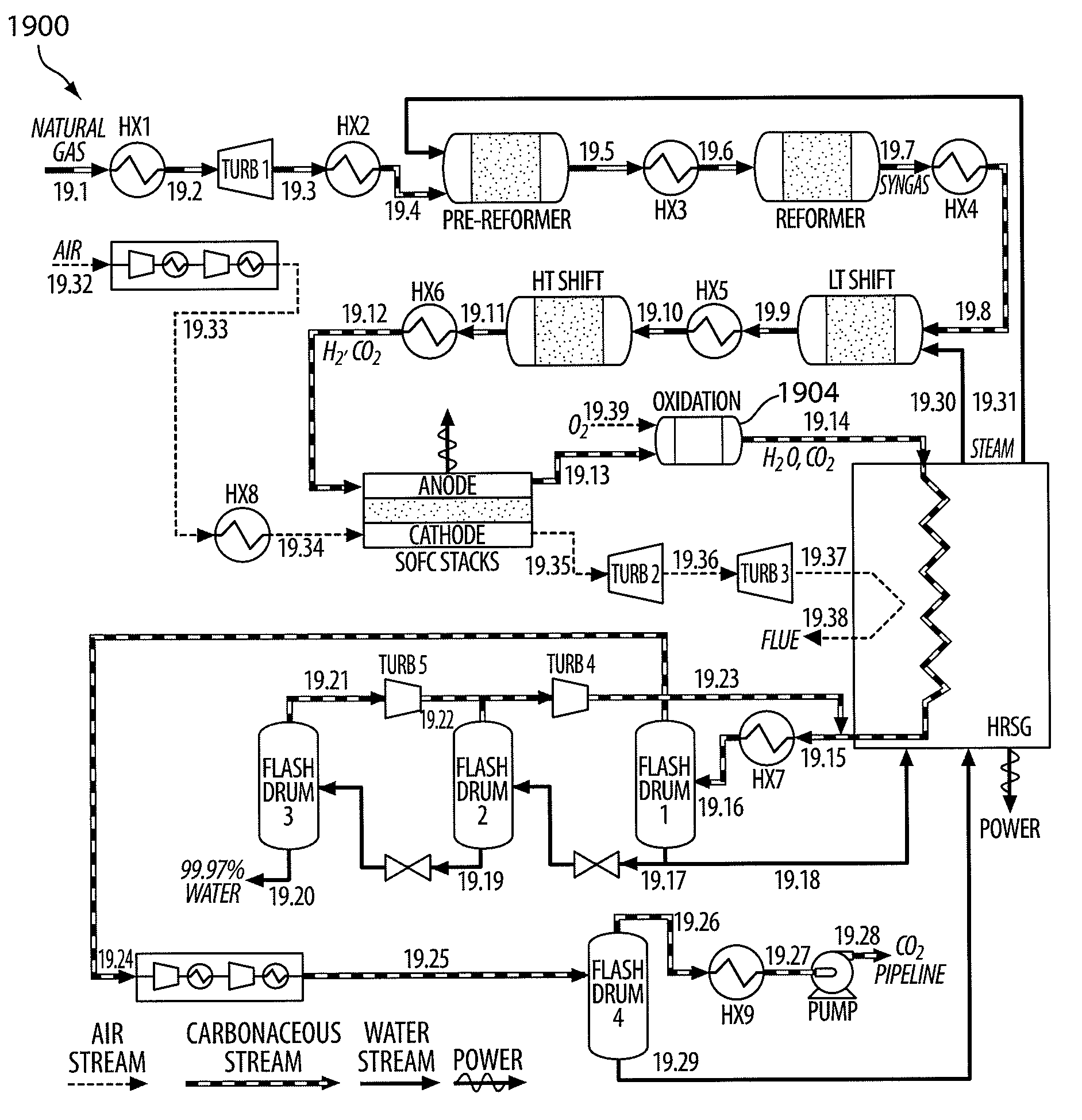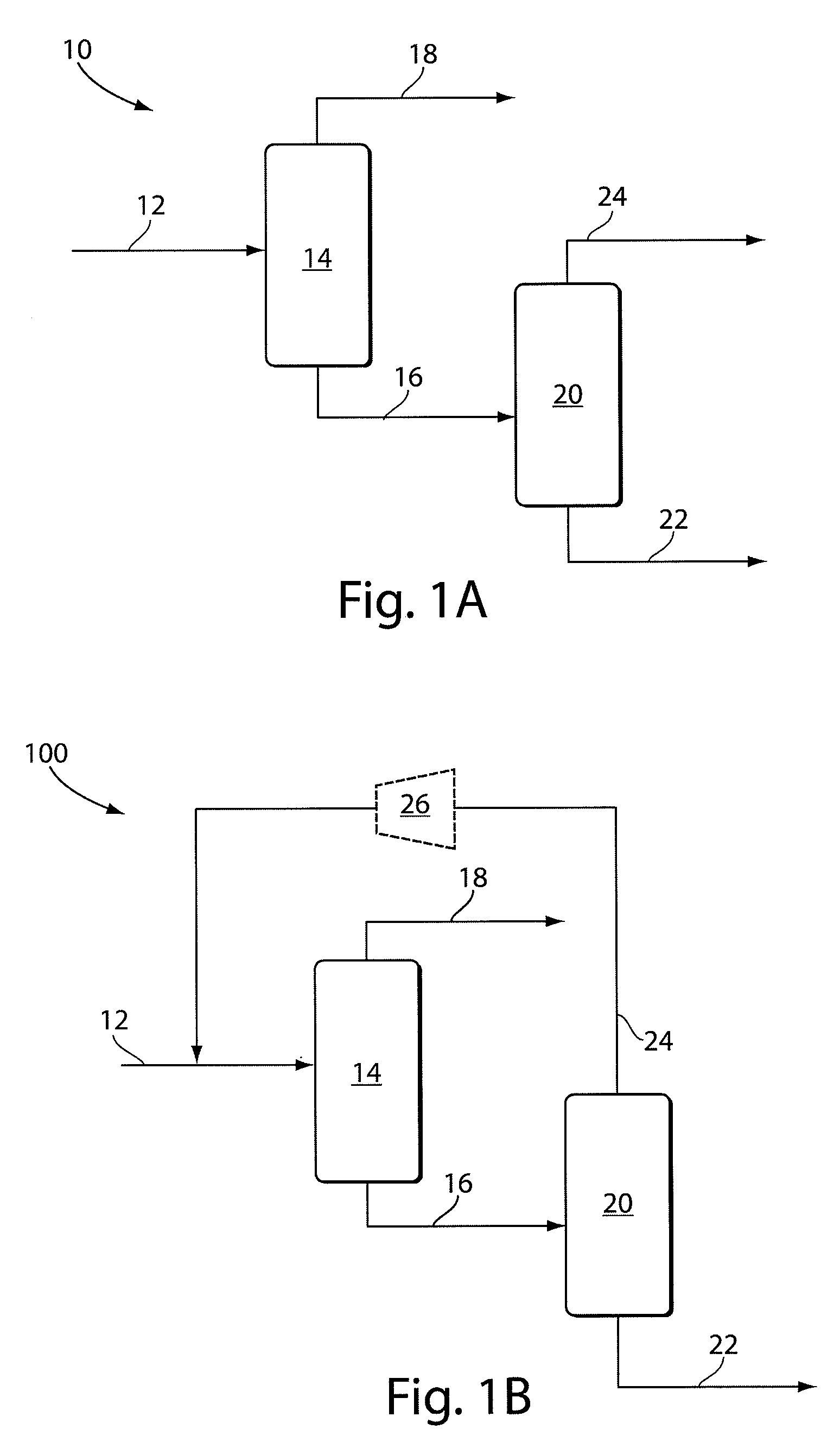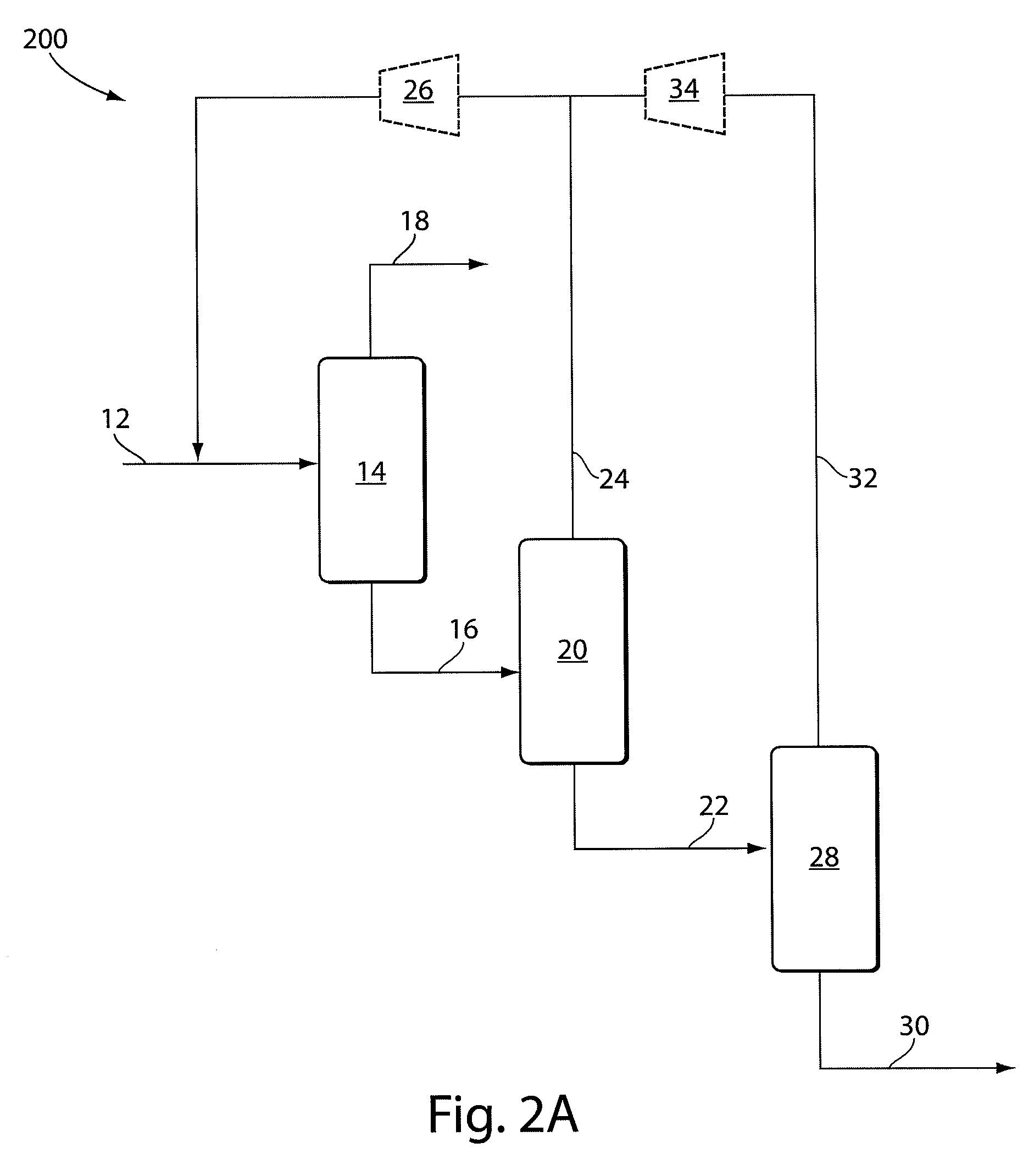Systems and methods for the separation of carbon dioxide and water
a technology applied in the field of carbon dioxide and water separation systems, can solve the problems of high purity, difficult separation, and inability to meet the requirements of high purity, and achieve the effect of improving the separation efficiency and reducing the cost of solvents
- Summary
- Abstract
- Description
- Claims
- Application Information
AI Technical Summary
Benefits of technology
Problems solved by technology
Method used
Image
Examples
example 1
[0089]This example describes a process simulation of a two-stage flash separation of carbon dioxide and water. The feed stream compositions and conditions listed in all examples herein were calculated using Aspen Plus 2006.5. All simulations described herein used the Peng-Robinson equation of state with the Boston-Mathias modification on all process units, except: Redlich-Kwong-Soave EOS with predictive Holderbaum mixing rules for streams primarily containing CO2 and H2O well below the critical point of CO2; NBC / NRC steam tables were used for pure water streams; and the electrolyte-NRTL model with Henry coefficients and electrolyte chemistry specifications obtained from the AP065 databank for CO2 / H2O rich streams near the critical pressure of CO2. All compressors and turbines were assumed to have an isentropic efficiency of 0.72, a mechanical efficiency of 1, and a maximum pressure ratio of 5.0. All pump efficiencies were calculated according to the software's default method, which ...
example 2
[0093]This example describes a process simulation of a process for the four-stage flash separation of carbon dioxide and water. The feed stream compositions and conditions listed in this example were calculated using Aspen Plus 2006.5 as described in Example 1. FIG. 8 is a schematic diagram of the four-stage flash system 800. The stream compositions and conditions in FIG. 8 are outlined in Table 2 below.
TABLE 2Stream compositions and conditions for the four-stage flash separation systemin FIG. 8Stream12.112.212.312.412.512.6T (° C.)1052121212121P (bar)18.618.518.418.415.015.0F (kmol / h)281192827712224160532416029Vapor Frac.0.466250.432281010MoleH2O56.58%56.27%0.17%98.99%0.2%99.14%FractionsN20.76%0.75%1.75%3 ppm0.17%212ppbAr0.69%0.68%1.58%7 ppm0.36%1ppmCO692 ppb688 ppb2 ppm315 ppbCO241.97%42.28%96.49%1.01%99.26%0.86%Stream12.712.812.912.1012.1112.12T (° C.)2020502121246P (bar)4.04.01.11.11.118.5F (kmol / h)10015929158953535158Vapor Frac.100111MoleH2O 0.6%99.76%99.97%2.24%2.24% 0.9%Fract...
example 3
[0098]This example describes a process simulation of a process for power and water production from coal with carbon capture and sequestration. The feed stream compositions and conditions listed in this example were calculated using Aspen Plus 2006.5 using the same physical property models and assumptions described in Example 1.
[0099]FIG. 9 is a schematic diagram of the integrated gasification / fuel cell / CO2—H2O separation system 900 described in this example. The amount of high-purity water generated in the system is sufficient to meet the fresh water consumption needs of the system, and the system as a whole operates at a higher efficiency compared to conventional processes with coal feeds.
[0100]To begin, ambient air is fed to an air separation unit (1 ASU), where the oxygen and nitrogen in the air are separated. Some of the O2 is compressed to high pressure and fed to the gasifier (2 Gasifier), and the rest is compressed to medium pressure and sent to the sulfur collection unit (10...
PUM
| Property | Measurement | Unit |
|---|---|---|
| wt % | aaaaa | aaaaa |
| electrical power | aaaaa | aaaaa |
| temperature | aaaaa | aaaaa |
Abstract
Description
Claims
Application Information
 Login to View More
Login to View More - R&D
- Intellectual Property
- Life Sciences
- Materials
- Tech Scout
- Unparalleled Data Quality
- Higher Quality Content
- 60% Fewer Hallucinations
Browse by: Latest US Patents, China's latest patents, Technical Efficacy Thesaurus, Application Domain, Technology Topic, Popular Technical Reports.
© 2025 PatSnap. All rights reserved.Legal|Privacy policy|Modern Slavery Act Transparency Statement|Sitemap|About US| Contact US: help@patsnap.com



